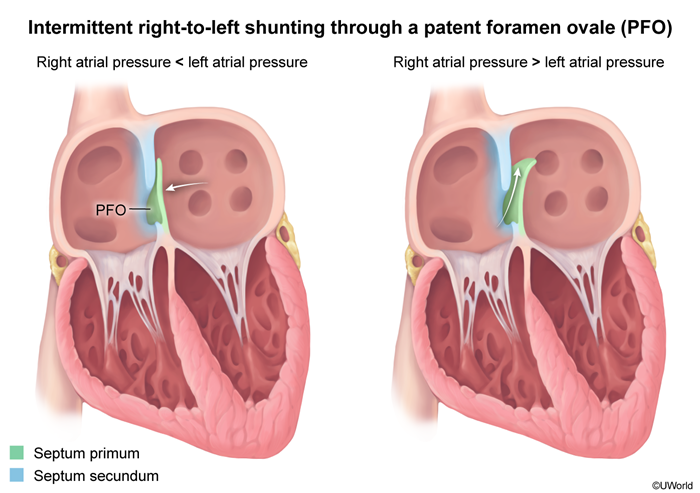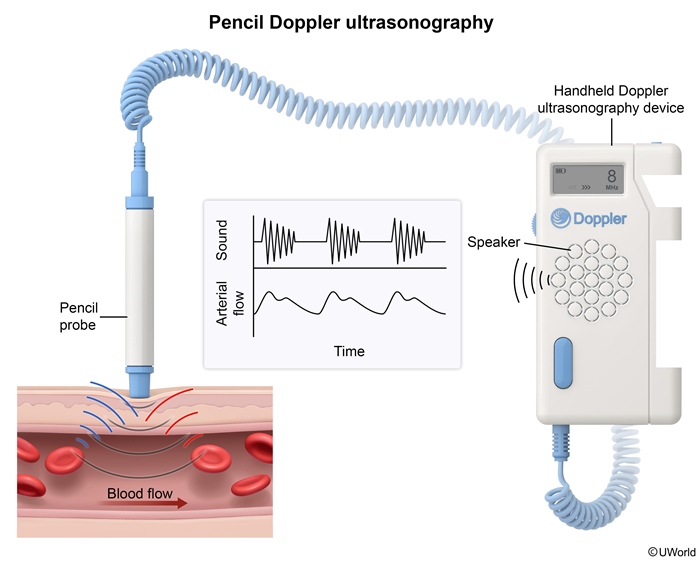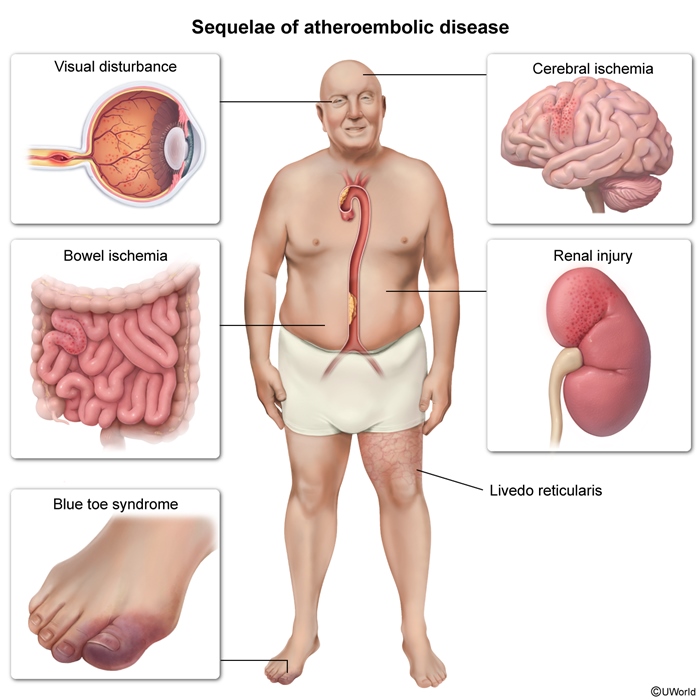Acute Limb Ischemia
Article Sections
Introduction
Acute limb ischemia results from an abrupt loss of blood flow to the distal portions of an extremity (usually a lower extremity). It most commonly occurs in the setting of peripheral arterial disease (PAD) due to rupture of atherosclerotic plaque, leading to the formation of an overlying thrombus and the rapid obstruction of blood flow. Acute limb ischemia can also result from distal embolization of a thrombus (or other material), as well as from other relatively uncommon causes. Acute limb ischemia requires prompt recognition and emergency management to prevent limb loss.
Causes and pathophysiology
Acute limb ischemia due to atherosclerotic plaque rupture and the formation of overlying thrombus is the PAD equivalent of myocardial infarction. Thrombus formation obstructs blood flow to distal skeletal muscle and other tissues.
Continue Learning with UWorld
Get the full Acute Limb Ischemia article plus rich visuals, real-world cases, and in-depth insights from medical experts, all available through the UWorld Medical Library.
Figures


